Use the right sander
There are various sanding tools available for DIY enthusiasts. For larger jobs, an electric sander can be a lifesaver. For smaller jobs, there are hand-held and cordless versions.
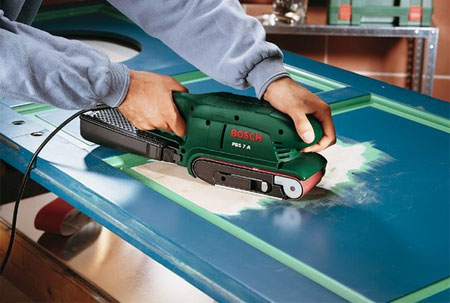
Belt Sander
On the belt sander a length of abrasive is formed into a wide fabric backed belt which is stretched over rollers and driven at high speed. Not really a home DIY tool unless you will be doing a project that involves long sections of timber or intensive removal of several layers such as rough sanding for deck and timber fence repairs or paint removal!
Multi Sander
The ideal beginner’s model; the multi-sander is all-round talent fits comfortably into your hand and can perform all types of sanding. It is especially effective in furniture restoration: its triangular sanding plate gets into any corner and its trapezoidal extension ensures a high material removal rate.
Cordless Multi Sander
Now you can have the convenience of a cordless power tool in a sander. Use the cordless multi sander anywhere and not have to worry about power. The long-lasting lithium-ion battery is always ready when you need it.
Orbital Sander
Don’t be confused by the name – orbital sanders can be any shape. Many people automatically assume that an orbital sander is round, but it’s the motion that the sander makes rather than it’s shape that gives it its name.
The orbital sander is a good all round tool suitable for rough rubbing down and finishing. The orbital action may, however, leave a slightly visible pattern of scratching on some types of material and for a finer finish rather select a random orbit sander.
As a matter of personal choice, the Skil Orbital Sander is my preferred model. The small handle is easy to hold and doesn’t cause as much hand fatigue when used for lengthy sanding projects.
The sandpaper is also very easy to remove and replace, plus the fact that you can buy a sheet of sandpaper and cut this into three strips – far better value for money.
The only downside is that it doesn’t have an integral filter box. But, hey – you can’t have everything!
Random Orbit Sander
On a random orbit sander the sanding disc is moved in orbits as on a orbital sander, but it simultaneously rotates at the same time. This has the effect of continuously changing the angle at which the orbital action is taking effect and greatly enhances the sanding action and resulting in less visible marking on the finish.
Surface texture is very important for giving a perfect appearance to your DIY project. Any cracks and holes should be removed before any surface treatment takes place, using wood filler. Then thorough sanding is required, in three stages, using grain sizes from coarse (80-100 grain), then fine (120-150 grain) and very fine (180-220 grain).
GOOD TO KNOW
The use of a dust mask is essential when sanding wood. It is also preferable to work in a large, open space that is well ventilated.
For a smooth, pattern-free finish on timber, start with a coarse-grit sandpaper and work up to a very fine-grit. It’s generally not necessary to sand finer that 180-grit.
Remember to sand with the grain of the wood if you want a smooth finish. Sanding across the grain can leave scratches, which become even more apparent when the wood is stained.
Replace worn sanding discs as and when required. You will save yourself a lot of hard work and effort.
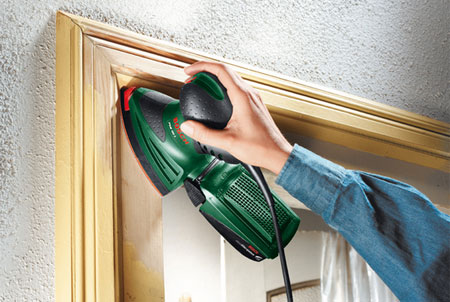

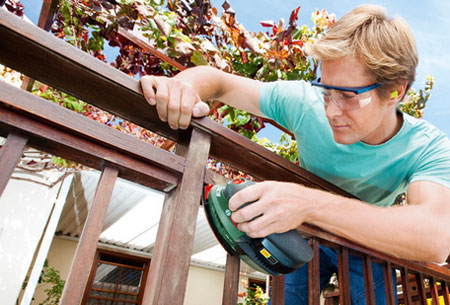
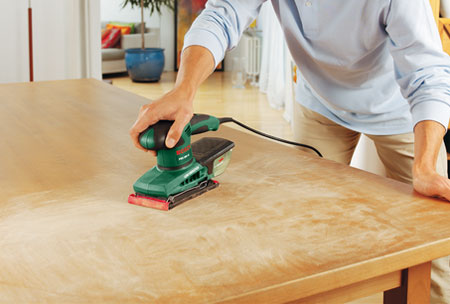

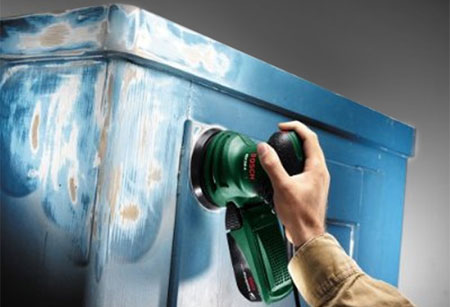

Comments
Jolie Wang says
Very useful information about using the right sander. Thanks for sharing it.
Add comment
replies
farooq12 says
Amazing info about the use of right sanders which is indeed very helpful
Add comment
replies
Add comment